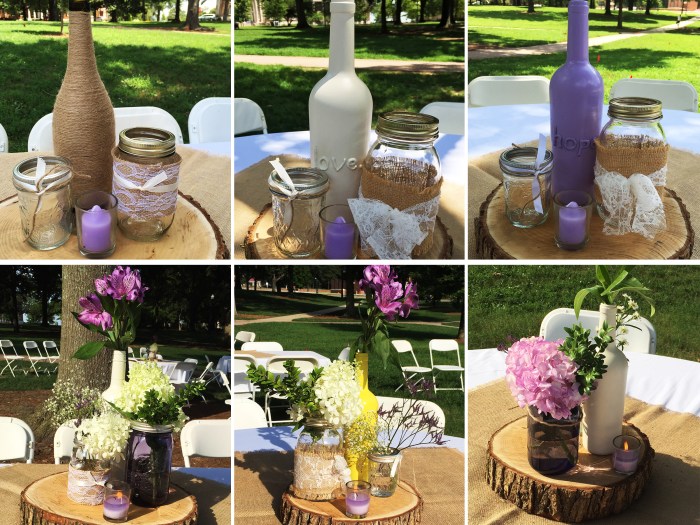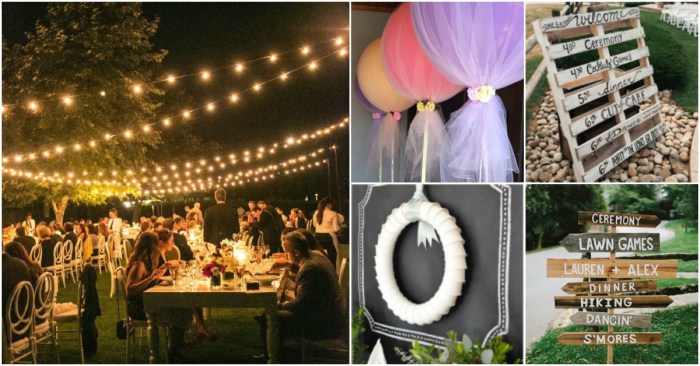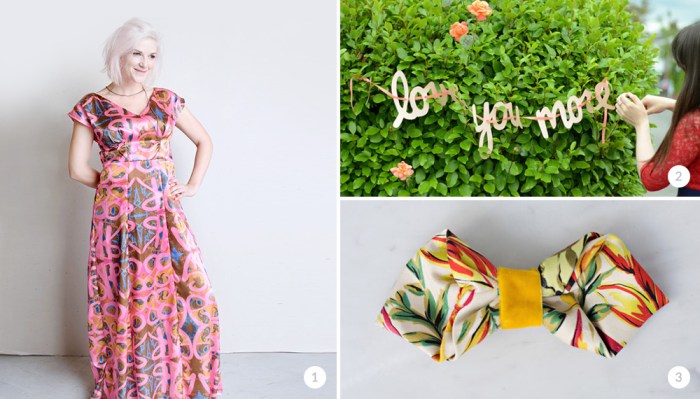Repurpose Wedding Dress Crafts Creative Upcycling
Wedding Dress Fabric Types & Their Repurposing Potential
Repurpose wedding dress crafts – Repurposing a wedding dress offers a sustainable and sentimental way to cherish this special garment. Understanding the fabric composition is crucial for successful upcycling. Different fabrics possess varying properties impacting their suitability for various craft projects. This section explores common wedding dress fabrics, their characteristics, and ideal repurposing applications.
Common Wedding Dress Fabrics and Their Suitability
Wedding dresses often incorporate a variety of fabrics, each with unique properties influencing their suitability for different crafts. Silk, satin, lace, tulle, and organza are commonly used, each requiring different handling and pre-treatment methods.
| Fabric Type | Properties | Suitable Crafts | Pre-Treatment |
|---|---|---|---|
| Silk | Delicate, luxurious, drapes well | Scarves, blouses, pillowcases | Hand wash in cool water, air dry flat |
| Satin | Smooth, lustrous, prone to snagging | Linings, bags, decorative accents | Hand wash or delicate cycle, avoid harsh detergents |
| Lace | Intricate, delicate, can be stiff | Embellishments, headbands, framed art | Hand wash or spot clean, carefully reshape while damp |
| Tulle | Stiff netting, lightweight, sheer | Flowers, overlays, skirt embellishments | Hand wash or machine wash on gentle cycle |
| Organza | Sheer, crisp, holds its shape well | Flowers, overlays, bows | Hand wash or delicate cycle, iron on low heat |
Popular Repurposing Crafts for Wedding Dresses
The possibilities for repurposing a wedding dress are vast, ranging from clothing and accessories to home décor items. This section showcases popular crafts, detailing the transformation process and involved techniques.
Repurposed Wedding Dress Crafts: Categories and Examples, Repurpose wedding dress crafts

Source: thatbacheloretteshow.com
- Clothing: Imagine the delicate silk transformed into a flowing blouse, the satin into a luxurious lining for a new jacket, or the lace into delicate trim for a skirt. A detailed image would show the original wedding dress next to the finished blouse, highlighting the repurposed fabric’s new form and showcasing the intricate details still visible in the finished garment.
The transformation would involve careful deconstruction of the dress, pattern making, and sewing techniques.
- Home Décor: The tulle could be fashioned into elegant curtains, or the lace into charming pillowcases. A detailed description of the pillowcases might include the use of the lace as an accent on a simple linen pillowcase, the soft silk used for a luxurious feel, or even the satin as a smooth backing. The process involves careful cutting, stitching, and potentially embellishing the repurposed fabrics.
- Accessories: The lace could be incorporated into a delicate headband, the satin into a beautiful clutch, or even the buttons repurposed for a unique jewelry piece. The image of the headband might show a delicate band of lace adorned with small pearls or beads, highlighting the original dress’s elegance. The process would involve careful removal of the lace, shaping it, and attaching it to a suitable base.
Step-by-Step Guides for Selected Crafts

Source: diyncrafts.com
This section provides detailed instructions for creating specific crafts using wedding dress fabric. Each guide includes numbered steps and visual descriptions to aid in the process.
Creating Pillowcases from Wedding Dress Fabric
- Wash and iron the chosen fabric section (e.g., silk or satin).
- Cut two rectangular pieces of fabric, allowing for seam allowance.
- Pin the pieces together, right sides facing.
- Sew along three sides, leaving one side open for turning.
- Turn the pillowcase right side out and press the seams.
- Close the opening with a neat seam.
Making a Lace Headband
- Carefully remove a section of lace from the dress.
- Measure and cut a length of elastic or fabric headband to fit.
- Attach the lace to the headband using fabric glue or sewing.
- Add embellishments (optional), such as beads or pearls.
Upcycling Lace into Framed Art
- Select a piece of lace with an interesting pattern or texture.
- Carefully clean and press the lace.
- Mount the lace onto a piece of acid-free mat board.
- Frame the matted lace using a suitable frame.
Addressing Challenges in Repurposing Wedding Dresses
Repurposing a wedding dress can present challenges, especially with delicate fabrics and intricate embellishments. This section addresses common difficulties and provides solutions.
Challenges and Solutions in Wedding Dress Repurposing

Source: spoonflower.com
| Challenge | Solution | Tips |
|---|---|---|
| Delicate Fabric | Use sharp scissors and fine needles; hand-sew where possible; use fabric stabilizer. | Pre-wash and press fabric before cutting. |
| Beading Removal | Carefully remove beads using pliers or a seam ripper; be patient and methodical. | Save removed beads for other projects. |
| Fabric Staining | Pre-treat stains with a suitable stain remover; test in an inconspicuous area first. | Handle fabric carefully to avoid further staining. |
Sustainability and Ethical Considerations
Repurposing a wedding dress offers significant environmental and ethical benefits. This section explores the sustainability and ethical implications of giving a wedding dress a new life.
Environmental and Ethical Benefits of Repurposing
Repurposing a wedding dress reduces textile waste, conserving resources and minimizing environmental impact. It promotes a circular economy and reduces the demand for new materials. Ethically, it gives the garment a second life, preventing it from ending up in landfills. This practice aligns with principles of sustainable consumption and responsible resource management. Comparing this to donation, where the dress may still end up discarded, or recycling, which often requires specialized facilities, repurposing offers a more direct and impactful solution.
Sustainable practices, such as using eco-friendly dyes and avoiding excessive embellishments during the repurposing process, further enhance the environmental benefits.
Top FAQs: Repurpose Wedding Dress Crafts
Can I repurpose a heavily beaded wedding dress?
Yes, but it requires patience. Carefully remove beads using small pliers or a seam ripper, saving those you want to reuse. Consider using the beaded sections as embellishments on other projects.
What if my wedding dress fabric is stained?
Pre-treat stains before starting any project. Test stain removal methods on an inconspicuous area first. Sometimes, the stain may be incorporated into the design, adding character to the final piece.
How do I preserve the lace from my dress?
Repurposing your wedding dress into something new is a fantastic way to preserve memories. Finding the perfect gown is crucial, and if you’re in New York and looking for stunning options, consider checking out the beautiful selection of plus size wedding dresses new york offers. Regardless of your dress’s origin, many creative projects await, from elegant shawls to charming baby blankets, allowing you to cherish your special day in a unique, lasting way.
Handle lace gently. Consider using a stabilizer or interfacing to support it during crafting. For delicate lace, frame it as artwork to preserve its integrity.
Where can I find patterns for repurposing wedding dresses?
Numerous online resources, craft blogs, and books offer patterns and inspiration for repurposing wedding dresses. Adapt existing patterns to suit your fabric and desired outcome.



















